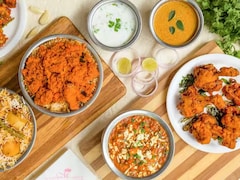1. Why are dim sums inextricably associated with tea?
2. What are the special teas that are paired with dim sums; is there a scientific reason or a traditional philosophy about this practice?The Far East philosophy is rooted within China and Japan, where tea is a ritual created via their traditional tea ceremonies. The tea ceremony takes place within a structured environment, full of simplicity and harmony, grace and tranquility.
3. Is there a particular manner in which these teas must be brewed? How can this be done at home?Teas are best brewed neat, as the Chinese do it. No wonder, they are a perfect example of porcelain complexion and healthy bodies. At home, especially in India, tea has been brewed over time like a concoction on a gas stove, with water, milk, loads of sugar and finally, tea leaves -- all dunked at one go over copious amount of boiling! Ironically, this holds well with processed teas. To benefit from the goodness of tea one should: Pick a great whole leaf, measure up to 2gms/a tsp or a small pinch with fingers into their favourite cup. The water has to be freshly drawn, not bottled or hard water. The water has to be kept at boiling point, so it is at the correct temperature when it is poured over the tea leaves. The better the quality of tea leaves, the lower the water temperature. Cover the cup with a lid. Let it steep for three minutes in case of green/white or three to five minutes for black/red teas and eight minutes for flower/fruit infusions.Care should be taken to not simply dunk and serve but instead spend a few minutes enjoying the leaves unfurl.
THE CHINESE TEA PHILOSOPHY> To not use milk or sugar
> To serve the teas at the beginning or the end of a meal
> The teas served are green, oolong (a tea variant between green and black) and black/red tea
> They like their flower/blooming teas like buds and artisan teas
> Includes brick tea called Pu-erhFrom: March 15 to 24, 4 pm to 7 pm
At: Yauatcha, ground floor, Raheja Tower, Bandra Kurla Complex, Bandra (E).
Call: 26448888(In Picture: Radhika Batra Shah Tea connoisseur)
2. What are the special teas that are paired with dim sums; is there a scientific reason or a traditional philosophy about this practice?The Far East philosophy is rooted within China and Japan, where tea is a ritual created via their traditional tea ceremonies. The tea ceremony takes place within a structured environment, full of simplicity and harmony, grace and tranquility.
Advertisement
3. Is there a particular manner in which these teas must be brewed? How can this be done at home?Teas are best brewed neat, as the Chinese do it. No wonder, they are a perfect example of porcelain complexion and healthy bodies. At home, especially in India, tea has been brewed over time like a concoction on a gas stove, with water, milk, loads of sugar and finally, tea leaves -- all dunked at one go over copious amount of boiling! Ironically, this holds well with processed teas. To benefit from the goodness of tea one should: Pick a great whole leaf, measure up to 2gms/a tsp or a small pinch with fingers into their favourite cup. The water has to be freshly drawn, not bottled or hard water. The water has to be kept at boiling point, so it is at the correct temperature when it is poured over the tea leaves. The better the quality of tea leaves, the lower the water temperature. Cover the cup with a lid. Let it steep for three minutes in case of green/white or three to five minutes for black/red teas and eight minutes for flower/fruit infusions.
Advertisement
THE CHINESE TEA PHILOSOPHY> To not use milk or sugar
> To serve the teas at the beginning or the end of a meal
> The teas served are green, oolong (a tea variant between green and black) and black/red tea
> They like their flower/blooming teas like buds and artisan teas
> Includes brick tea called Pu-erhFrom: March 15 to 24, 4 pm to 7 pm
At: Yauatcha, ground floor, Raheja Tower, Bandra Kurla Complex, Bandra (E).
Call: 26448888
Advertisement
For the latest food news, health tips and recipes, like us on Facebook or follow us on Twitter and YouTube.
Advertisement
